Great mysteries of labyrinths

Labyrinths, natural and artificial, have long excited people's imaginations. They frighten and at the same time irresistibly attract. They were attributed magical properties, they were used in the initiation rites of growing children and the initiation rites of adults in various mysteries and cults. In ancient China, it was believed that evil spirits can only move in a straight line, and therefore even the streets of cities with their bends resembled labyrinths. And the entrances to Chinese cities were often deliberately designed in the form of labyrinths.
Architectural structures, specially designed as labyrinths, pursue the goal of making it as difficult as possible to get out of them or to make it impossible without outside help. But, as we have already said, there are also natural, natural labyrinths that served as prototypes for man-made ones. An example is the underground cave systems. And even any forest with paths leading to no one knows where is also a labyrinth. And the streets of a large unfamiliar city are often represented as a labyrinth.
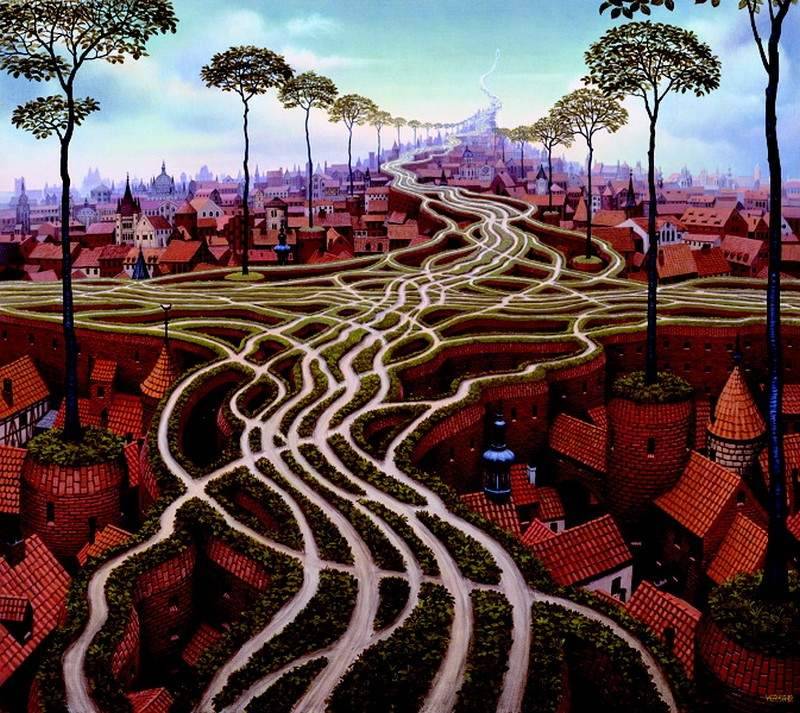
J. Yerka. Erosion
And any choice facing a person, in essence, is a symbolic entrance to the labyrinth. An excellent illustration of this situation is the painting by V. Vasnetsov "The Knight at the Crossroads".

When solving any problem, the brain must find the only correct path among dozens of false ones.

Versions of the origin of the word "maze"
The word "labyrinth", which came to our language from Hellas, has a pre-Greek origin and is one of the most ancient in the world. There are several versions trying to explain its meaning. According to the first, it comes from the name of the double-edged ax - labris (λάβρυς), which was widely used in religious ceremonies on the island of Crete and symbolized the two horns of the sacred bull. It came to the Russian language through the German language - Labyrinth.
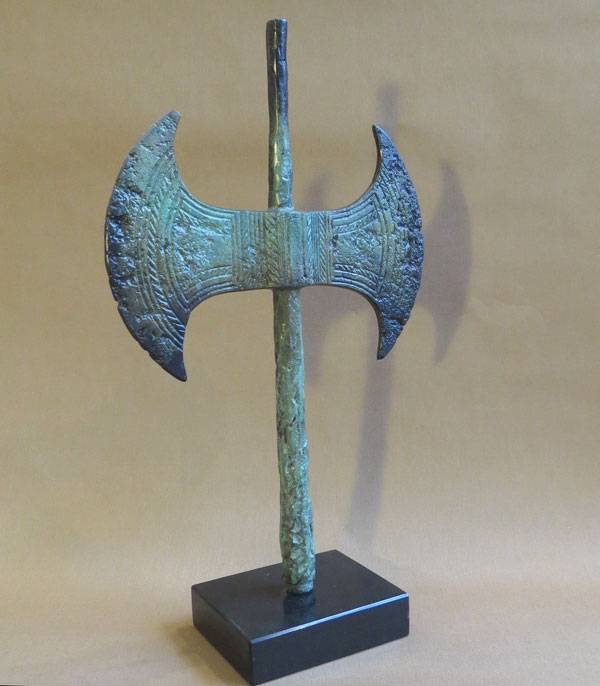
Labrys from Minoan Crete replica
In this case, the labyrinth is the "house of the double ax" or "the sanctuary of the deity with the double ax."
According to another version, this term is derived from the pre-Indo-European word meaning "stone". In Byzantium "labrami" were called monasteries surrounded by stone walls, in Greece - monasteries in caves. This is the origin of the familiar Russian word "lavra". As an example, we can cite the Lavra of St. Athanasius in Greece (Athos), the Holy Dormition Kiev-Pechersk Lavra.
Why build mazes?
What is the purpose of the labyrinths, why were they created over the millennia in different countries and on different continents?
Based on the famous ancient Greek myth of Theseus and the Minotaur, many medieval researchers over the centuries considered labyrinths like Knossos as prisons and places of detention. Often they referred to the opinion of the ancient Greek historian Philochorus (345-260 BC), who considered the Cretan labyrinth a prison for Athenian boys, whose destiny was to become slaves to the winners of sports competitions.
This simplistic and purely utilitarian approach has not stood the test of time. Already in the XNUMXth century, the abode of a terrible monster, into which the heroes of the story were forced to enter against their will, began to be considered as a symbol of the kingdom of the dead, the abode of darkness and shadows, the embodiment of ancient chthonic horror.
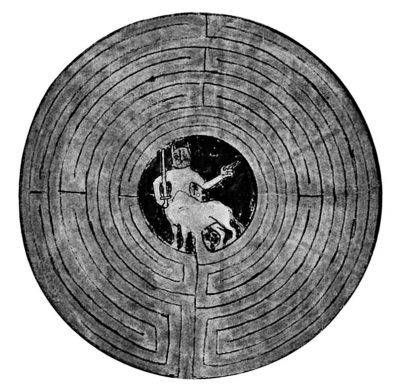
Labyrinth with a minotaur. Drawing in a French manuscript, circa 1120
But this approach did not satisfy many researchers, who proposed their own vision of the problem: the labyrinth is a symbol of the path leading to rebirth and new life. In this case, the passage through the labyrinth symbolizes the new birth of a person, his transformation. There is a lot of evidence that the labyrinths were used in the initiation rites of adolescents or the initiation of a select few. Perhaps Theseus and his retinue came to Crete in order to undergo a rite of initiation into the mysteries of the local cult. In this case, the Minotaur (his real name is Asterius, "Star") is not a prisoner, but the master of the labyrinth, an underground deity, the lord of the kingdom of shadows.
Modern scholars suggest that the Greeks divided the single god of the Cretans into two hypostases: the judge of the world of the dead, Minos and his stepson, the Minotaur. Later it was forgotten that the Minotaur did not devour, but tested those who entered the labyrinth. This is confirmed by the fact that story birth of Minos is, in general, a softened version of the plot about the birth of the Minotaur. If the parents of Minos are Zeus who took the form of a bull and Europe abducted by him (this is where the well-known ancient Roman saying originates from: what is allowed to Jupiter, not allowed to a bull), then the parents of the Minotaur were the sacred bull of Poseidon and Minos' wife Pasiphae. Some researchers believe that drawings of the labyrinth type (the oldest of which, painted about 4 thousand years ago on the wall of the tomb, was found on the island of Sardinia) and the first man-made labyrinths could appear as an attempt to depict the movement of the Sun and planets.
There is also a more "cheerful" version of the purpose of the labyrinths, according to which all the labyrinths of Southern Europe laid out of stone were used for cult dances, which reproduced the movement of planets, stars and the Sun along the firmament. These dances differed from others in their particular complexity of figures and movements, and the lines of the labyrinth helped to move in the desired sequence. It is also believed that in ancient Greece the word "labyrinth" was used in a number of cases to designate both a ritual dance platform and the dances themselves.
In ancient Rome, labyrinths were often also called the word "Troy". Virgil mentions the ritual "Trojan" games, the obligatory element of which was intricate dance movements. "Trojan" dances symbolized a difficult road and trials in moving towards a set goal. There is also known evidence of the games of Roman children who built impromptu labyrinths of stones on the streets of cities or in the surrounding fields. A version of one of these games that has survived to our time is the well-known "classics".
Labyrinths of different countries and continents
Currently, the remains of the grandiose labyrinths are found not only in Europe, but also in North Africa, India and China. In the Nazca Desert (South America), giant labyrinths have been found in the form of various animals and insects.
In Celtic mythology, labyrinths are the entrances to the underworld, dancing fairies and elves are often seen on their spirals on moonlit nights.
And in India, labyrinths are symbols of meditation, concentration, getting rid of samsara and the laws of karma.

Goa maze, India
Indian labyrinths are often the continuation of the ends of the ancient solar symbol of the swastika in the form of spiral lines.
The natives of America considered the passage of the labyrinth as a cure for bodily and mental ailments.
Legends were made about the most famous of the labyrinths among the people, some famous historians of antiquity told about them, who distinguished five great labyrinths: Egyptian, which, according to Pliny, was located under Lake Moeris, two Great labyrinths at Knossos and Gortana, Greek on the island of Lemnos and Etruscan in Clusium.
Let's remember the most famous labyrinths from ancient times to the present day.
Fayum labyrinth
The largest labyrinth in the world is now recognized as the Egyptian one, which was built near Lake Moiris (now Lake Birket Karun) west of the Nile and 80 kilometers south of Cairo near El Fayum. Therefore, this labyrinth is often called Fayum. It is an annex to the pyramid of the fourth pharaoh of the 484th dynasty Amenemkhet III, who lived in the 430rd century BC. the high priest of Egypt Manetho also calls Labaris (here is another version of the origin of the word "labyrinth"). Some Greek authors even included this structure among the seven wonders of the world. The earliest mention of it belongs to the Greek historian Herodotus of Halicarnassus (circa XNUMX-XNUMX BC), who speaks of this grandiose structure as follows:
Another description of this labyrinth belongs to the Greek geographer and historian Strabo of Amasa (about 64 BC - 24 AD), who in 25 BC. e. made a trip to Egypt as part of the retinue of the prefect of Egypt, Gaius Cornelius Gall:
The Egyptian labyrinth is also mentioned in their writings by Diodorus Siculus, Pomponius Mela and Pliny. And who lived in the 1843st century. BC. Diodorus asserts that if the famous Cretan labyrinth has not survived, then "the Egyptian labyrinth stood completely intact to our times." Some fragments of this grandiose structure have survived to our time. In XNUMX, they were examined by the German expedition of Erbkam, but since no sensational finds were found, reports of these excavations did not receive much response. Most modern researchers consider the Egyptian labyrinth to be a temple complex in which sacrifices were made to all the gods of Egypt. It is assumed that the labyrinth is connected with the cult of the god Osiris, who was considered the god of the underworld.
Knossos labyrinth of Crete
As for the famous Knossos labyrinth on the island of Crete, Roman sources claim that it was just a miniature copy of the Egyptian one. Living in the 1900st century. AD Pliny, for example, believed that the Knossos labyrinth reached only one hundredth the size of the Egyptian. The Knossos labyrinth has not yet been found. Some historians believe that the palace of the Cretan kings at Knossos was built in the form of a labyrinth: discovered in XNUMX by the English archaeologist A. Evans, it really was a huge complex of buildings grouped around a large rectangular courtyard, interconnected by intricately curved corridors and staircases and light wells. Some of these researchers consider the throne room of the Palace of Knossos as the center of the Cretan labyrinth, others - the central courtyard, paved with plaster slabs, which was used as an arena for the Minoan bullfight - tavromachia (this unusual rite for the Greeks could become one of the sources of the myth about the duel of Theseus and the Minotaur ).
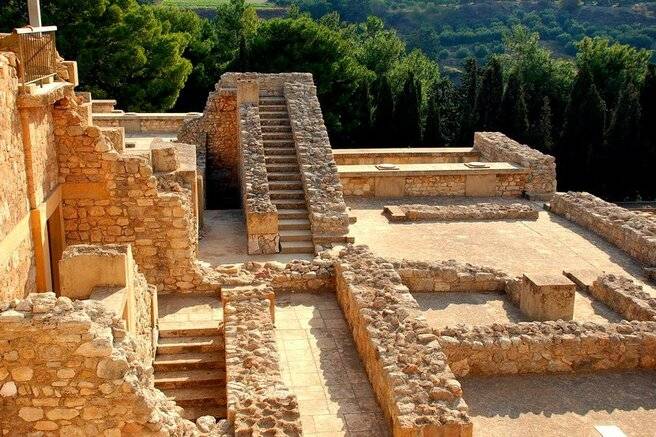
Ruins of the palace of Knossos
Labyrinths of Samos and Rome
Pliny also reports on the grandiose labyrinths on the Mediterranean island of Samos and the underground labyrinth of a certain Etruscan tomb (its description is also known from the writings of Varro). It is reliably known that about 60 labyrinths were built in different provinces of the Roman Empire, and the image of the labyrinths was used as an element of wall and floor decoration. Very often, such images were located near the entrance or right on the threshold and, probably, were considered as a protective symbol. Two such decorative labyrinths were discovered during excavations in Pompeii.
Most often, labyrinths are presented as a series of gloomy, usually underground rooms. This is what the most famous of them looked like, which became the home of the Minotaur.
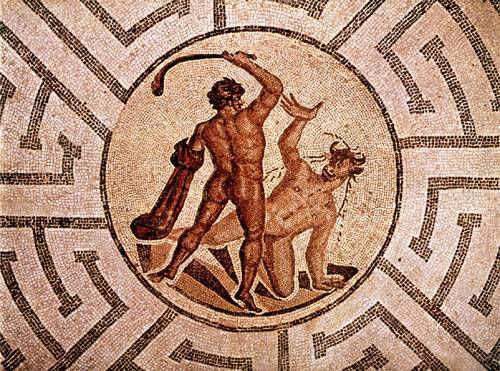
Theseus and the Minotaur duel, mosaic in Pompey
However, most mazes are much simpler.
Church labyrinths of Western Europe
In the European Christian tradition, labyrinths most often symbolized the path from life to death and from death to birth, the path of the cross of Christ, or the movement of pilgrims and crusaders to Jerusalem. In cathedrals that pilgrims visited on the way to the main shrine, labyrinths symbolized the road leading to repentance. These labyrinths have 11 concentric circles or paths (the number symbolizing "sin" in the medieval Christian tradition), along which you had to crawl on your knees. Thus, the total length of concentric circles in the labyrinth of Shartsky Cathedral is about 260 meters: on their knees, the pilgrims covered this path in a little less than an hour.
In the Christian countries of Western and Southern Europe, symbolic labyrinths were usually painted or laid out, picking up multi-colored stones, on the floors of churches and cathedrals. For the same purpose, mosaics and parquet flooring were used. Such labyrinths are usually circular in shape, with a circle called the "sky" in their center. An example is the labyrinth of the Cathedral of Chartres (Notre-Dame de Chartres), created at the beginning of the 1205th century (the most likely date is XNUMX) from white and blue stones. The size of the labyrinth almost coincides with the size of the rose of the stained glass window of the western facade, but does not exactly repeat it. But the distance from the western entrance to the labyrinth is exactly equal to the height of the window. According to the plan of the builders, on the day of the Last Judgment, the cathedral (like all buildings on earth) will collapse. The rose of the stained-glass window depicting this Court on the western façade of the nave will fall on the "sky" in the center of the labyrinth - and the earthly will merge with the heavenly.
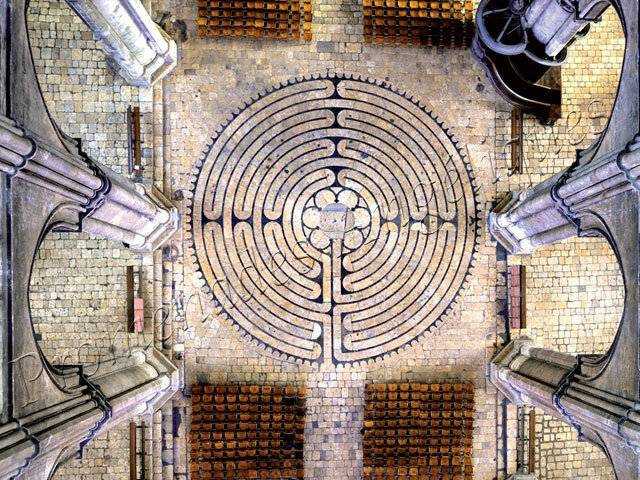
Labyrinth of Chartres Cathedral
In some cathedrals, instead of a circle in the center of the labyrinth, they began to depict a cross, which led to the appearance of square-shaped labyrinths.
Church labyrinths are being built today. In the 2010s. in the process of restoration, such a labyrinth received the Fedorovsky Cathedral in St. Petersburg.
Northern Europe labyrinths
In Northern Europe, labyrinths were laid out on the ground of stones or sod. Such labyrinths are usually horseshoe-shaped. More than 600 labyrinths have survived on the coasts of the Baltic, Barents and White Seas: there are about 300 in Sweden, about 140 in Finland, about 50 in Russia, 20 in Norway, 10 in Estonia, and so on. Most of them, apparently, are associated with ancient fishing magic: local fishermen believed that, having passed through the maze, they would ensure themselves a good catch and a happy return.
But some of the northern labyrinths located next to the burial grounds are probably associated with the cult of the dead. It is believed that they were built so that the souls of the dead could not return to the living. Another echo of these fears is the custom of throwing spruce branches on the way of the funeral procession: it was believed that needles would prick the bare feet of the deceased and prevent him from entering the world of the living.
In the photo below we see the labyrinth of the uninhabited Swedish island Blo-Jungfrun ("Blue Maiden"), discovered in 1741 by Karl Linnaeus.
Tradition connects this labyrinth with witches who gathered here for the Sabbath. According to another legend, not confirmed archaeologically, 300 witches were executed on this island in the Middle Ages.
Labyrinths of Russia
On the territory of Russia, labyrinths can be seen in Dagestan, on the coast of the White Sea, on the Solovetsky Islands, in the Murmansk region and in Karelia. In the Russian North, labyrinths are often called "Babylon". One of the labyrinths of the Big Zayatsky Island is shown in the photo:

Labyrinth on Bolshoy Zayatsky Island (Solovetsky Islands archipelago). Here, rows of stones from 13 labyrinths converge into a spiral of snakes, whose heads meet in the center
And here we see the labyrinths, which are believed to be associated with the above-mentioned fishing magic. The first of them is the famous Murmansk Babylon:
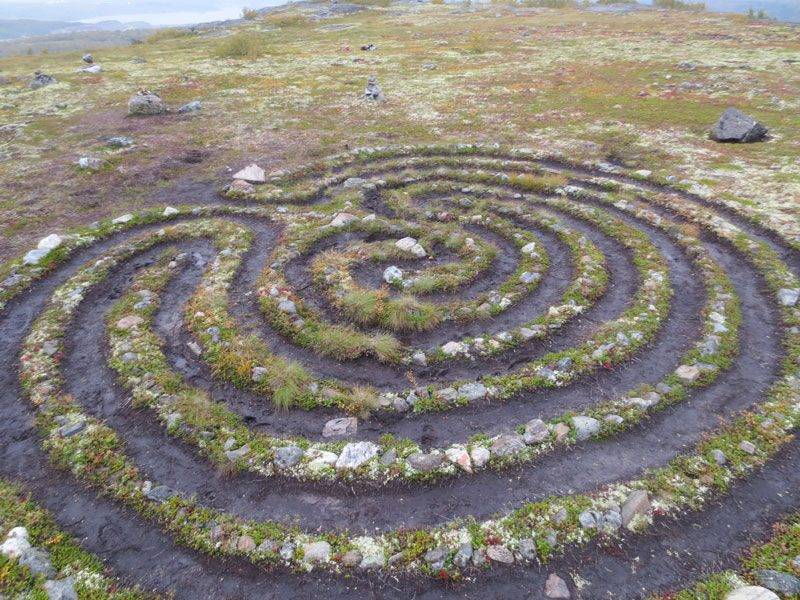
Murmansk labyrinth Babylon
And this is the Kandalaksha labyrinth located near the former fishing tony Maly Pitkul:
Living labyrinths
Sometimes a park or garden plays the role of a labyrinth, and living shrubs play the role of walls. These are, of course, the youngest labyrinths at the time of their appearance. In the photo below you see the Hampton Court Maze, the oldest in Great Britain, which was designed by D. London and G. Wise in 1690 (possibly on the site of another, older labyrinth).
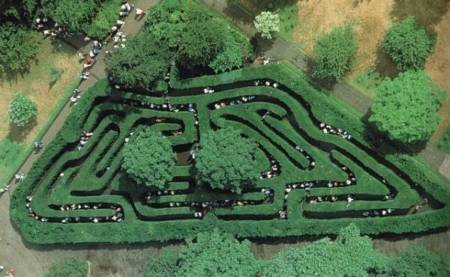
Hampton court maze
Its "walls" are trimmed yew bushes. It is this labyrinth that is described in Jerome K. Jerome's novel Three Men in a Boat, Excluding a Dog.
Living labyrinths are still popular today. Having lost their sacred meaning, they remained a good bait for tourists. So, in Australia, the Ashcombe Maze labyrinth was created from more than 1200 rose bushes of two hundred varieties: roses have a different aroma, and therefore visitors can walk through the labyrinth, focusing on the smell.
The longest living labyrinth is currently considered the "Pineapple Orchard" on the former Dole plantation on the Hawaiian island of Oahu. The length of its tracks exceeds 5 km.

Labirint dole
And the title of the largest labyrinth in area (4 hectares) belongs to the French Reignac-sur-Indre, which is formed by corn and sunflower. It is curious that at the end of the season the harvest of this labyrinth is harvested and used for its intended purpose.
Thanks to the use of annual crops, this labyrinth changes its shape every year.
Modern labyrinths as a place of relaxation
In conclusion, it should be said that in our time in the United States and Western Europe, modest traditional labyrinths of local importance are being built - not for tourists, but for purely utilitarian purposes. They can be seen in hospitals, schools, some businesses and prisons. And even in some episodes of the American cartoon "Duck Tales" you can see how the nervous Scrooge McDuck quickly walks through his small personal maze. Labyrinths in these countries are considered ideal places for relaxation and effective psychotherapy. It is believed that each person puts his own meaning into visiting such a labyrinth.
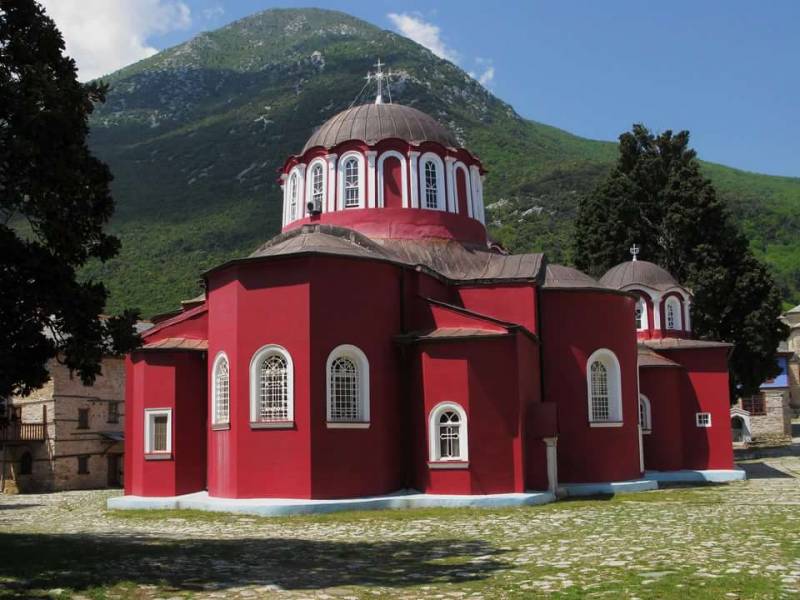
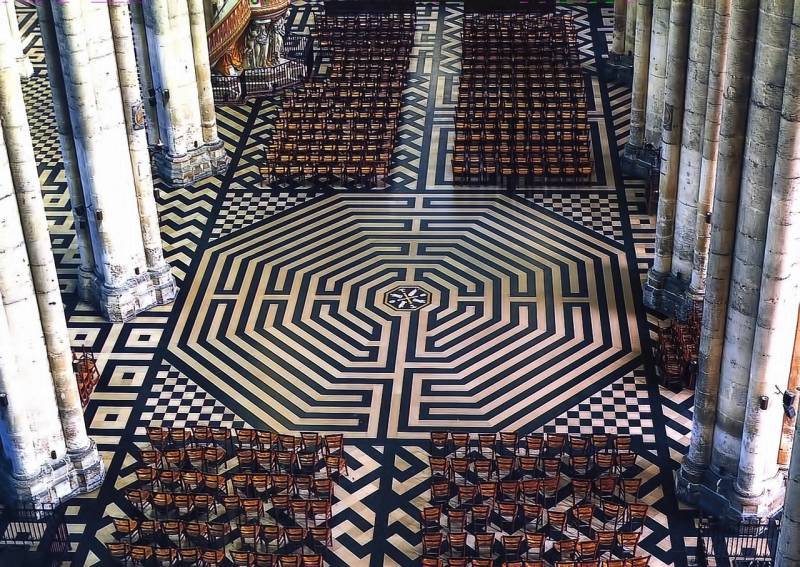
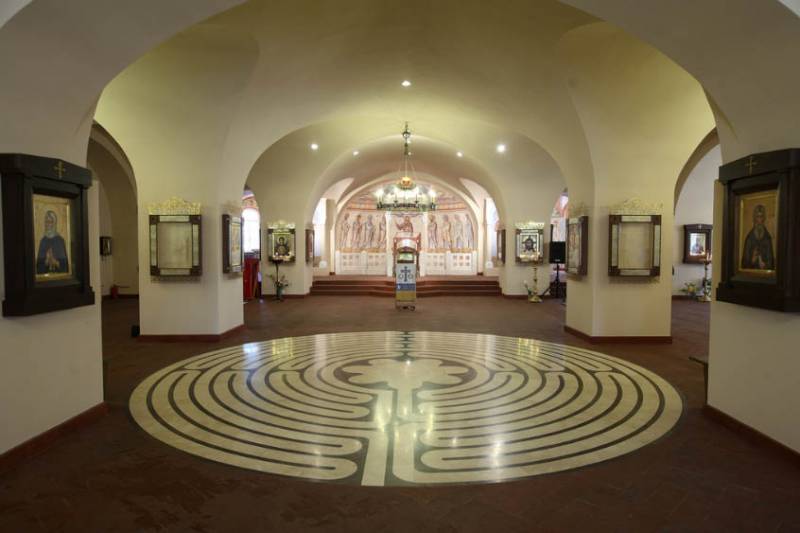



Information